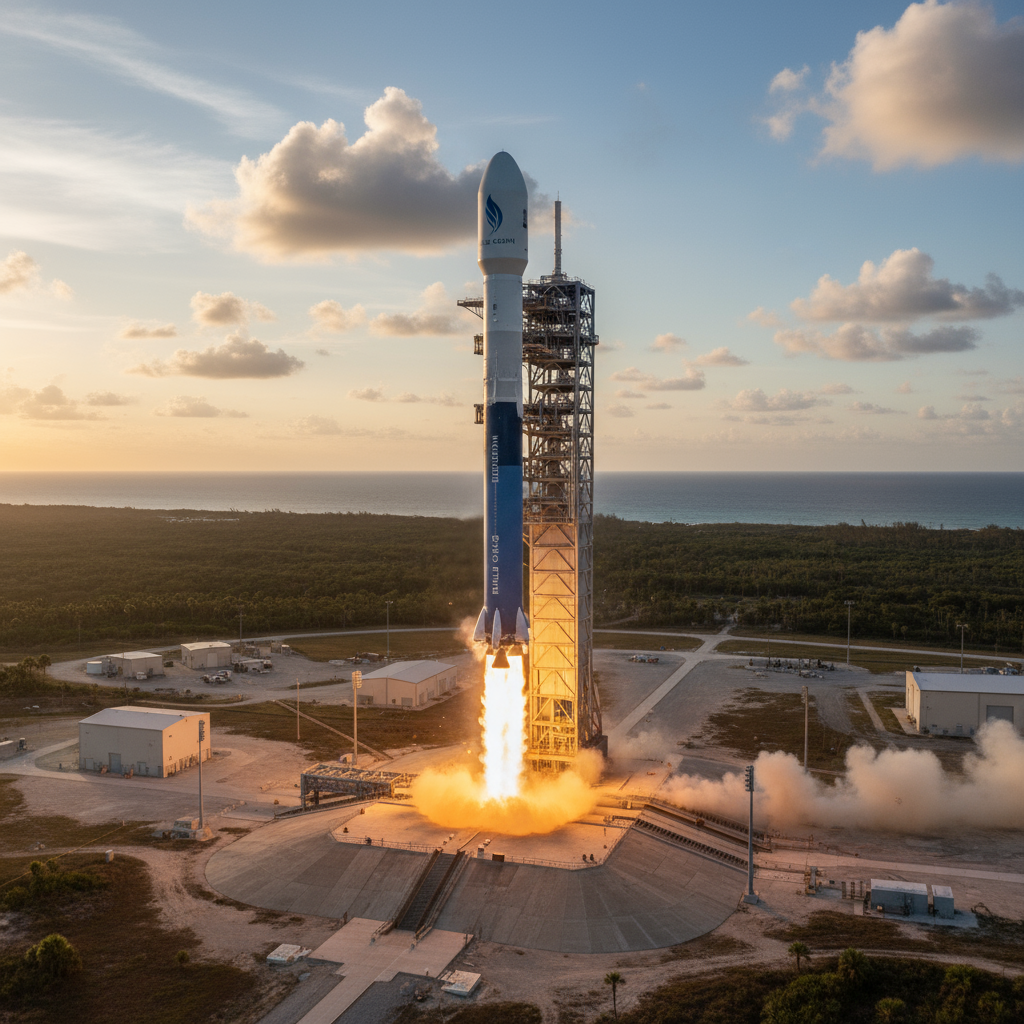Physical Address
304 North Cardinal St.
Dorchester Center, MA 02124
Physical Address
304 North Cardinal St.
Dorchester Center, MA 02124
Global aviation news tracker
Global aviation news tracker

Blue Origin completed a 40‑second static fire of its New Glenn rocket at Cape Canaveral, paving the way for NASA’s EscaPADE Mars mission.
Blue Origin ran a 40‑second New Glenn static fire test at Launch Complex 36 (LC‑36) at Cape Canaveral Space Force Station late Thursday, a key milestone before the company’s first NASA‑contracted launch. The test was the third ignition of New Glenn at LC‑36 and is intended to validate the vehicle’s ground systems and booster readiness ahead of the mission.
The static fire — a ground‑held engine ignition used to check performance — helps confirm propellant feed, engine start sequencing and telemetry before a flight. New Glenn is Blue Origin’s heavy‑lift rocket designed to be partly reusable; the company plans to attempt booster recovery after this launch, aiming to improve on a prior recovery attempt that failed to secure the booster.
NASA’s EscaPADE mission will send twin spacecraft to Mars to study the planet’s plasma environment and how solar wind interacts with the Red Planet’s atmosphere. The mission is a NASA (National Aeronautics and Space Administration) science effort; Blue Origin is the launch provider. Officials have said the launch could happen in the coming days or weeks, pending final prelaunch checkouts.
The test advances both commercial and government spaceflight steps: Blue Origin gains confidence in New Glenn systems while NASA moves closer to launching EscaPADE. Engineers will review telemetry from the static fire and complete any remaining checklists before issuing a final launch decision.
Expect further updates from Blue Origin and NASA as teams analyze the static‑fire data and set a firm launch date. For spaceflight watchers, this is a notable moment for New Glenn and for commercial launches supporting planetary science.